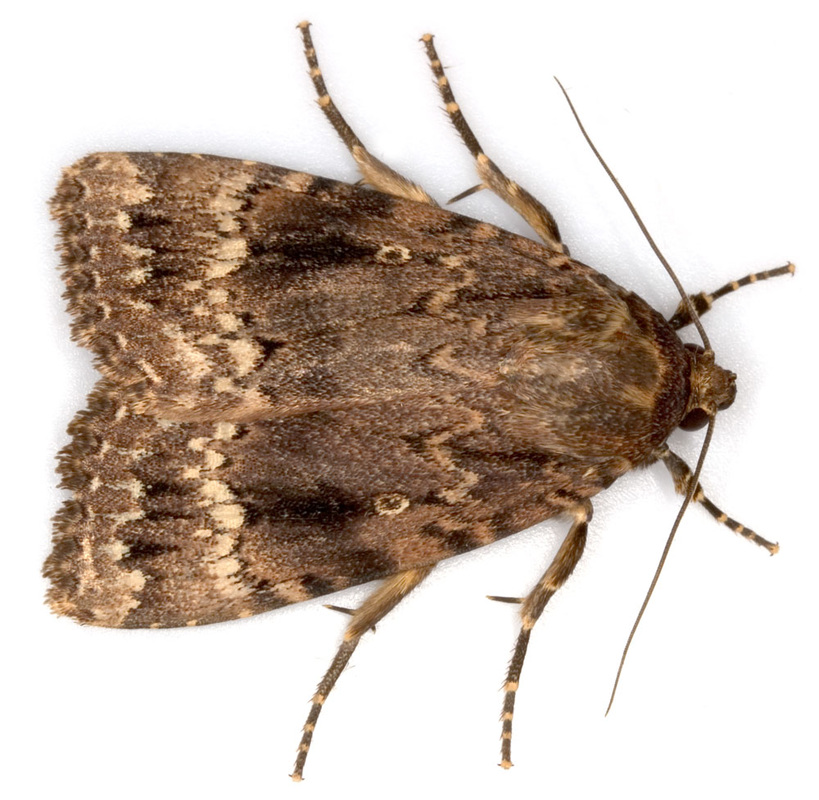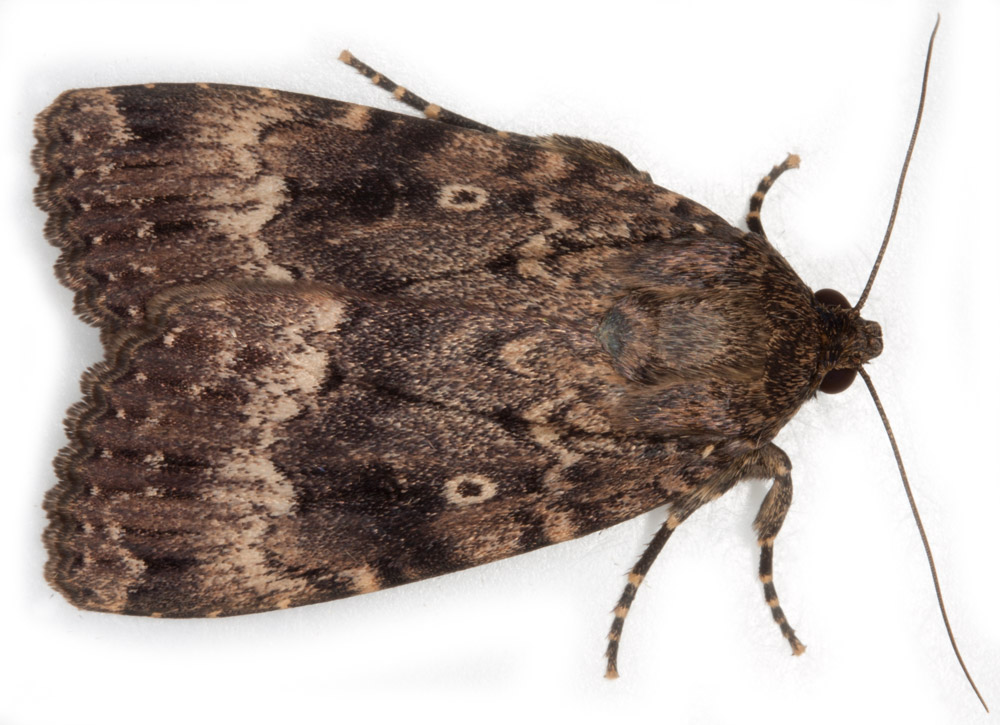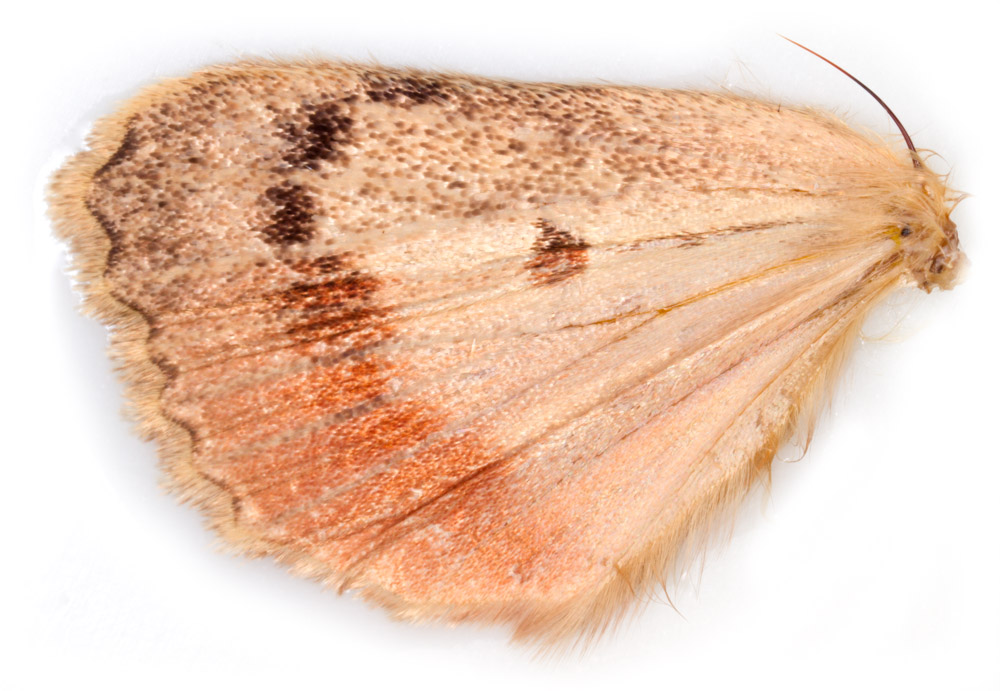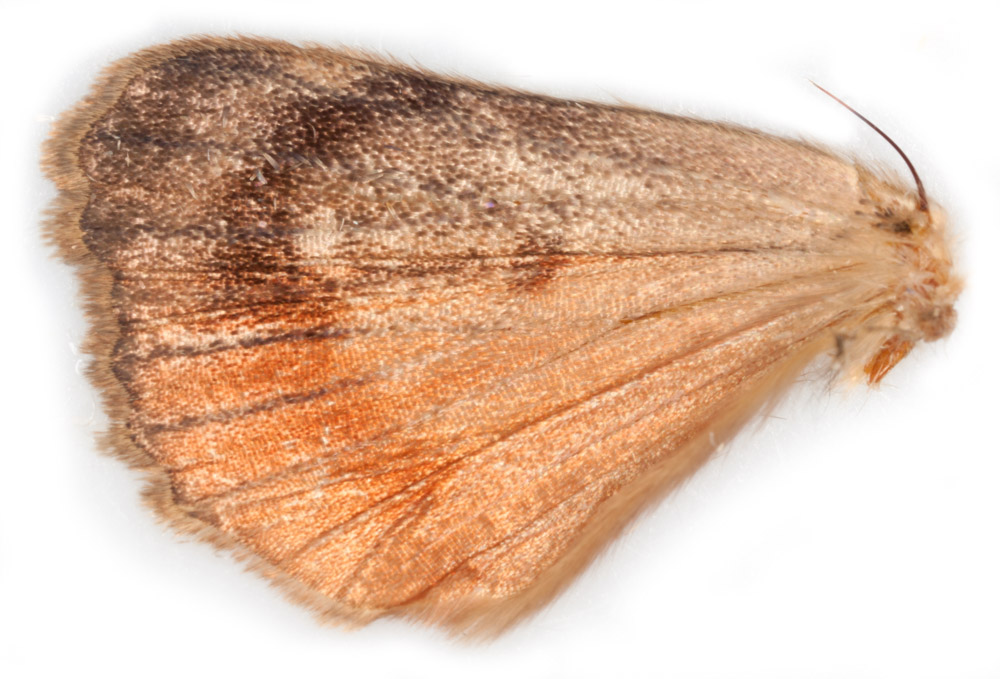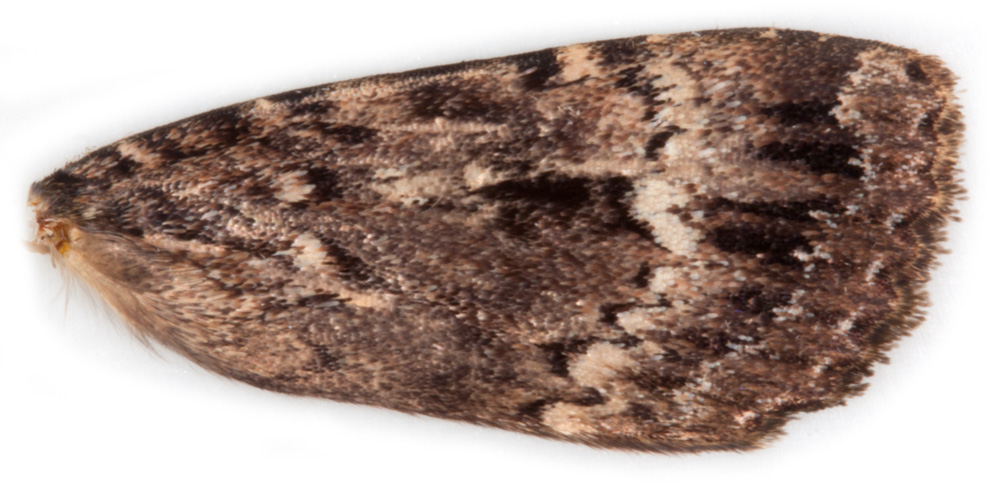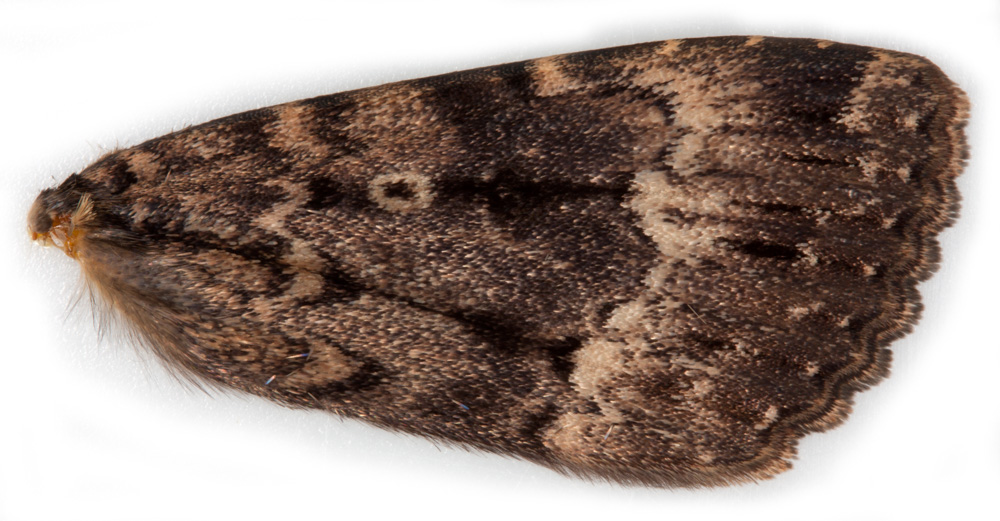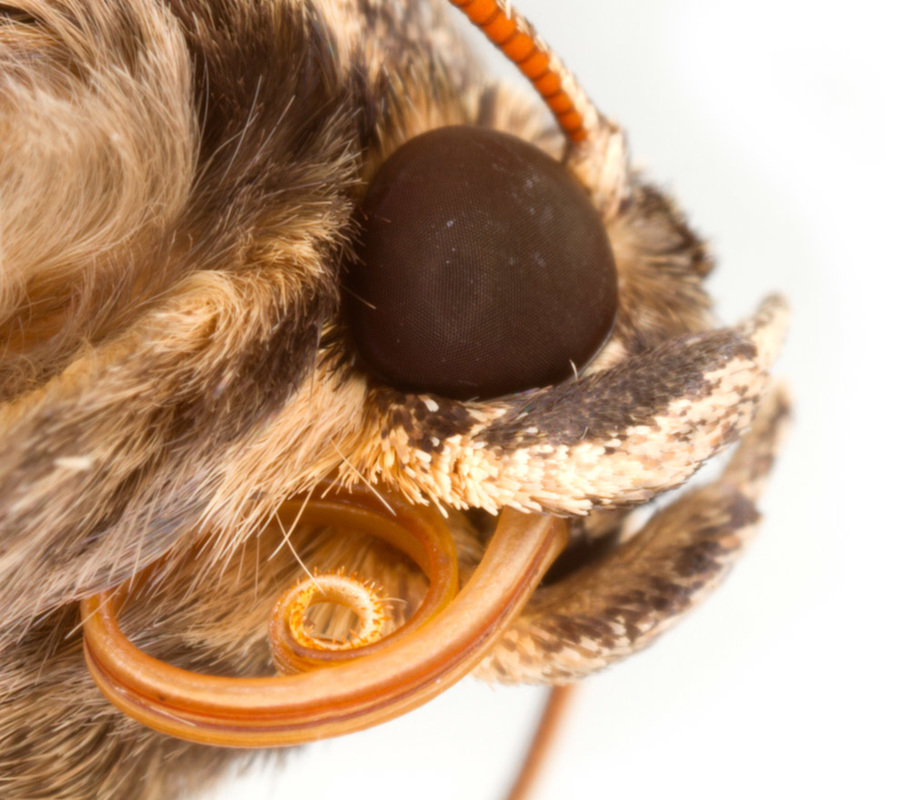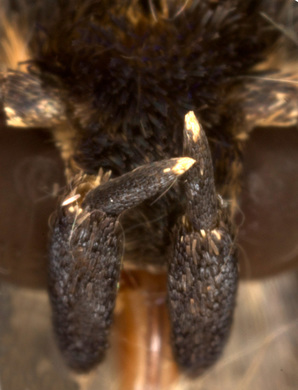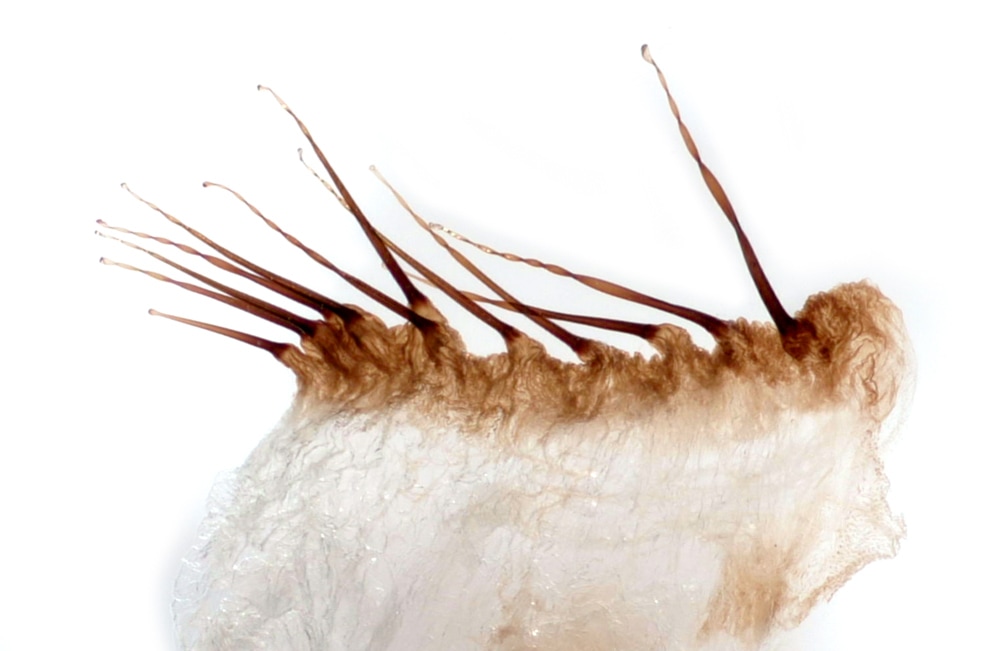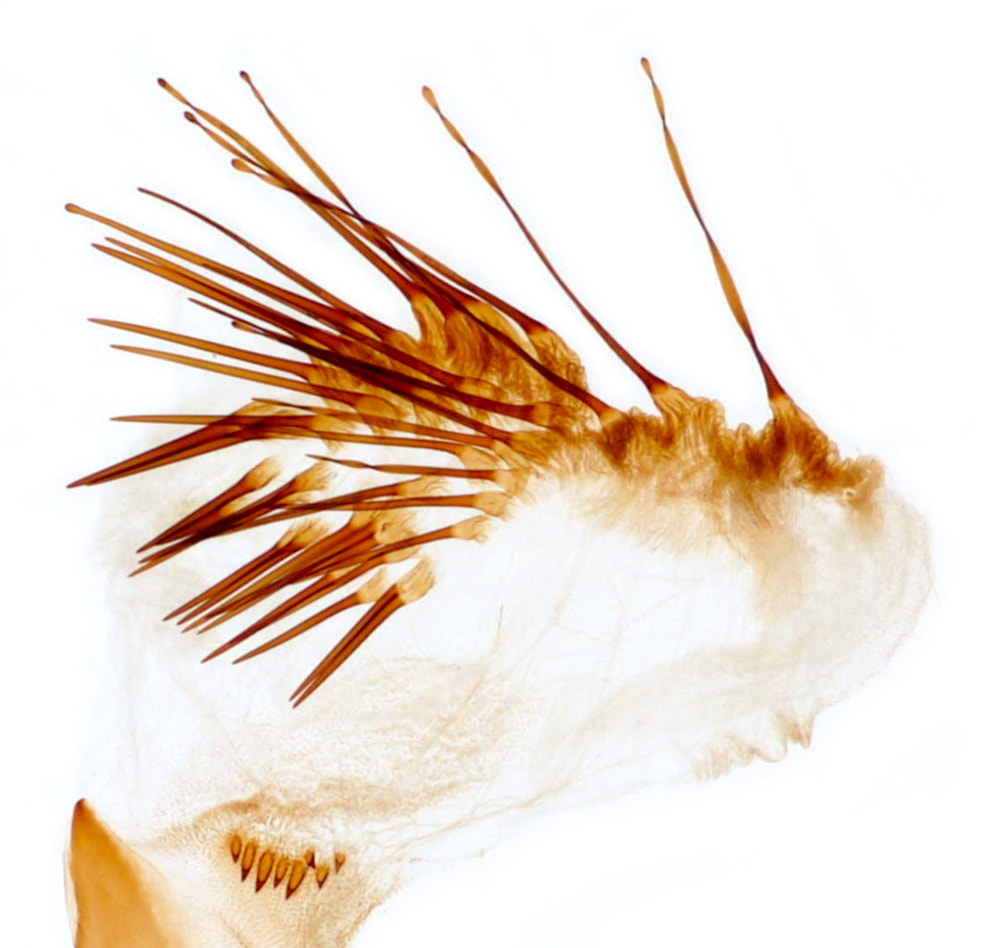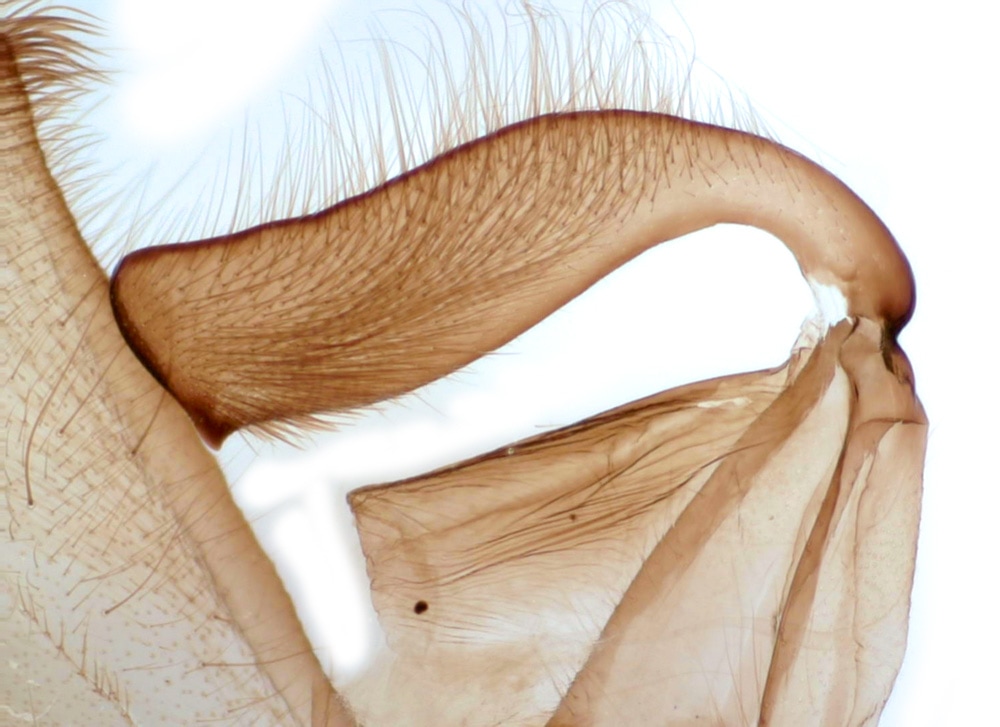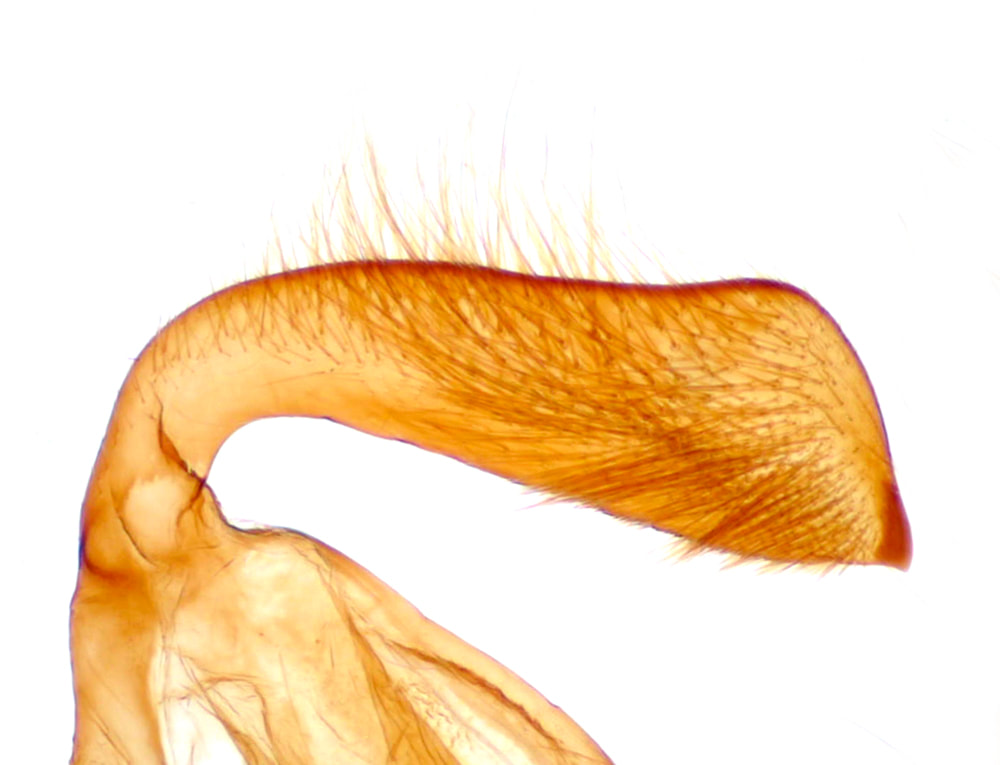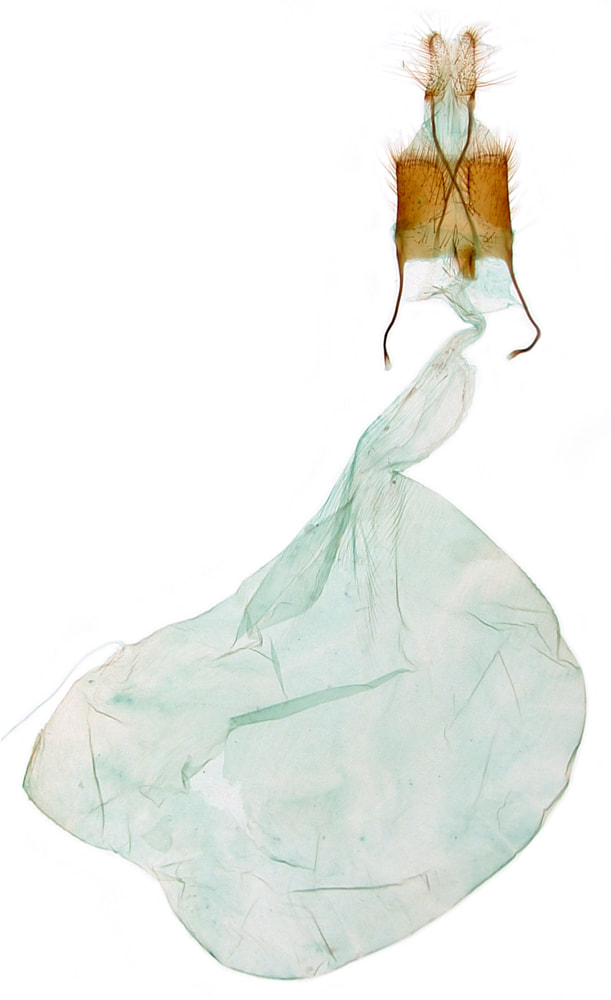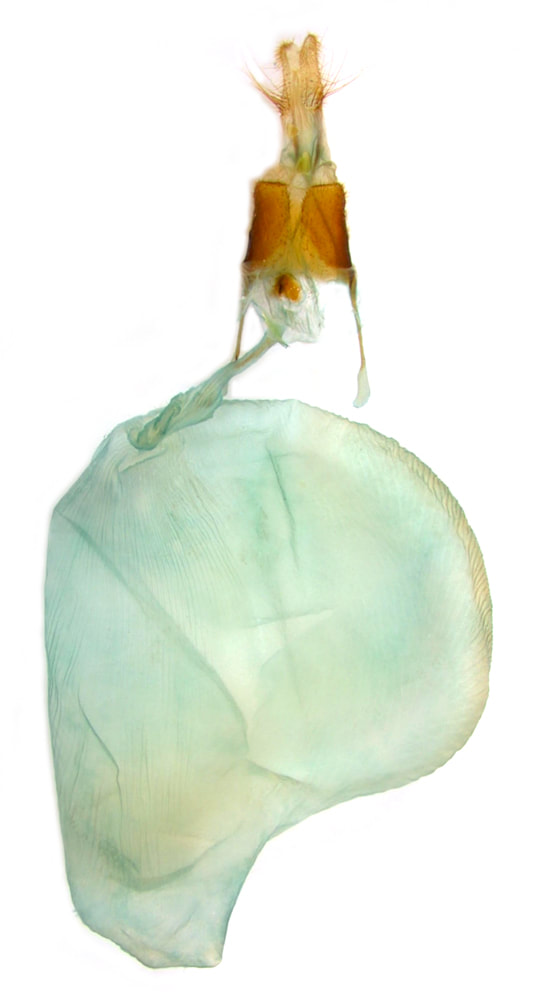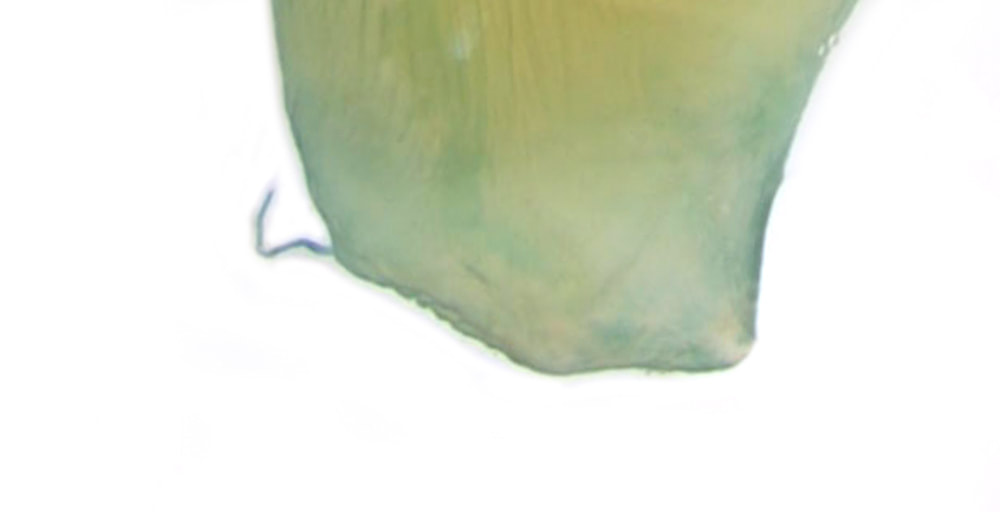Amphipyra pyramidea (Copper Underwing) & A.berbera (Svensson's Copper Underwing) see Difficult Species Guide |
Hindwing underside (diagnostic in fresh specimens)
The most reliable external distinction between these two species. Both show a broad grey suffusion along the costal border; both show a broad dark postmedian fascia extending from the costa towards the dorsum; both have a copper colour in the dorsal half of the wing distal to this fascia. In A.pyramidea the copper colour is much paler proximal to the fascia (more pale straw than copper) so that there is a strong contrast between the outer 1/3 and inner 2/3; in A.berbera the copper colour proximal to the fascia is similar to that distal to the fascia so that there is little or no contrast.
The most reliable external distinction between these two species. Both show a broad grey suffusion along the costal border; both show a broad dark postmedian fascia extending from the costa towards the dorsum; both have a copper colour in the dorsal half of the wing distal to this fascia. In A.pyramidea the copper colour is much paler proximal to the fascia (more pale straw than copper) so that there is a strong contrast between the outer 1/3 and inner 2/3; in A.berbera the copper colour proximal to the fascia is similar to that distal to the fascia so that there is little or no contrast.
Forewing upperside
Markings tend to be more distinct in A.pyramidea. Both species have a jagged dark-edged pale antemedian line; in A.pyramidea the apices of the 2 most dorsal ‘V’s of this jagged line appear equidistant from the forewing base; in A.berbera the apex of the more dorsal of these 2 ‘V’s is slightly further from the wing base.
Markings tend to be more distinct in A.pyramidea. Both species have a jagged dark-edged pale antemedian line; in A.pyramidea the apices of the 2 most dorsal ‘V’s of this jagged line appear equidistant from the forewing base; in A.berbera the apex of the more dorsal of these 2 ‘V’s is slightly further from the wing base.
Labial palps (the easiest feature to see on a live moth)
In A.pyramidea the labial palps are black with a ventral white stripe; in A.berbera the labial palps are black with a white apex to S3. DSG comments that this feature is unreliable in worn specimens.
In A.pyramidea the labial palps are black with a ventral white stripe; in A.berbera the labial palps are black with a white apex to S3. DSG comments that this feature is unreliable in worn specimens.
Male genitalia:
In the aedeagus both species have a series of spine-like cornuti: in A.pyramidea there are 12-13 and in A.berbera there are 34-36. In A.berbera the uncus has a more evenly rounded dorsal margin towards the apex, such that the ventral margin extends further from the base; in A.pyramidea the dorsal margin is humped such that this hump extends further from the base than the ventral margin.
In the aedeagus both species have a series of spine-like cornuti: in A.pyramidea there are 12-13 and in A.berbera there are 34-36. In A.berbera the uncus has a more evenly rounded dorsal margin towards the apex, such that the ventral margin extends further from the base; in A.pyramidea the dorsal margin is humped such that this hump extends further from the base than the ventral margin.
Female genitalia
According to DSG in A,pyramidea the bursa copulatrix is squarish and the ductus seminilis "arises at 2/3 from the proximal end"; while in D.berbera the bursa copulatrix is rounded and "narrowed to distal end" and the ductus seminilis "arises from the distal end". I have some difficulty with the use of the terms proximal and distal in relation to the female genitalia as these are relative terms and it is not inherently clear what these features are proximal or distal to - usually the reference point is the centre of the body, but it is clear from the illustrations in DSG that the intended reference point is the ovipositor (about as far from the centre of the body as it is possible to get). DSG also implies, correctly, that the shape of the bursa can easily become distorted in preparation.
So I propose an improvement: In A.pyramidea the bursa copulatrix is relatively angular and the ductus seminilis arises ~1/3 the length of the bursa from its anterior end; in A.berbera the bursa copulatrix is rounded in its posterior 2/3 and the ductus seminilis arises at or near to its anterior end.
So I propose an improvement: In A.pyramidea the bursa copulatrix is relatively angular and the ductus seminilis arises ~1/3 the length of the bursa from its anterior end; in A.berbera the bursa copulatrix is rounded in its posterior 2/3 and the ductus seminilis arises at or near to its anterior end.
